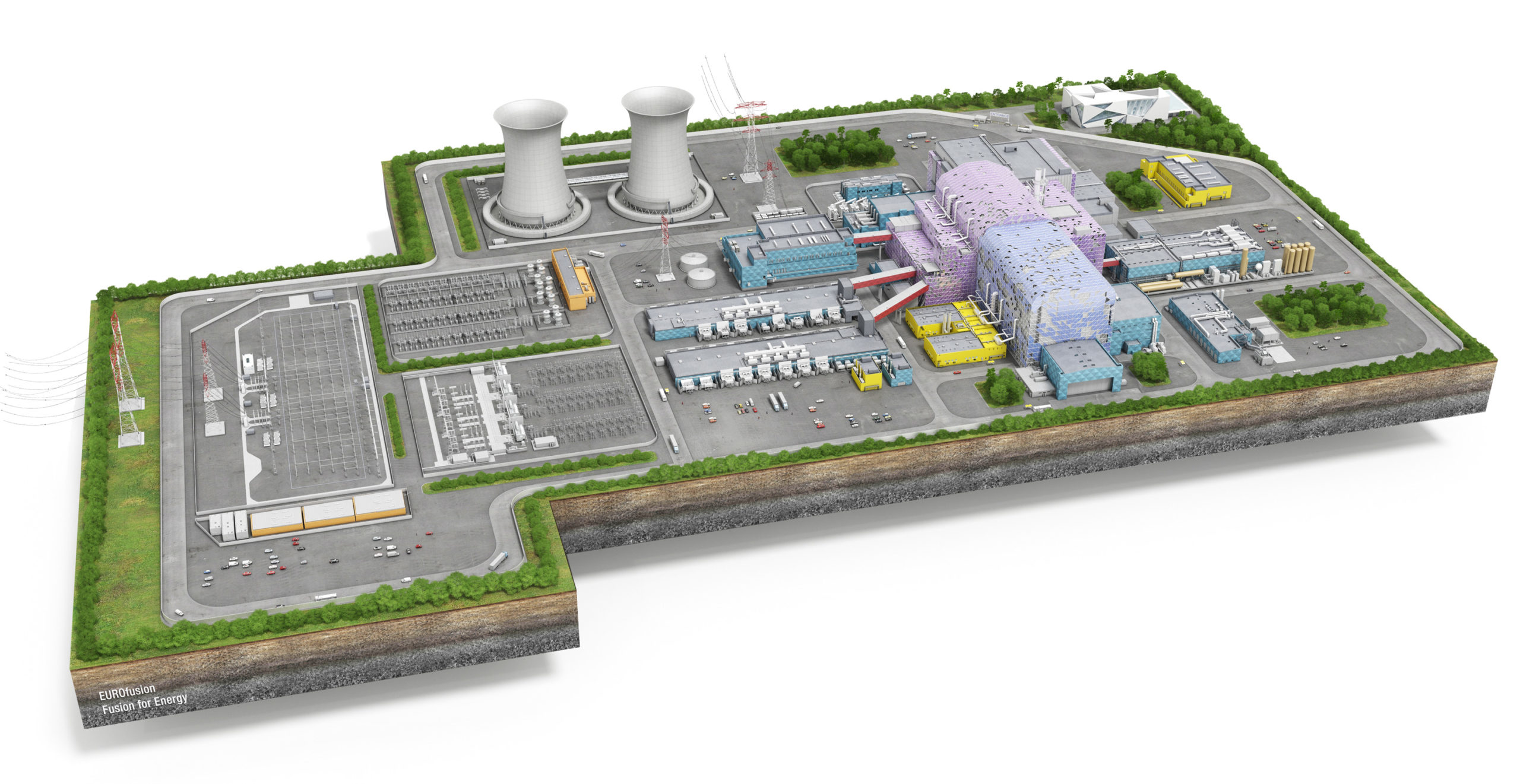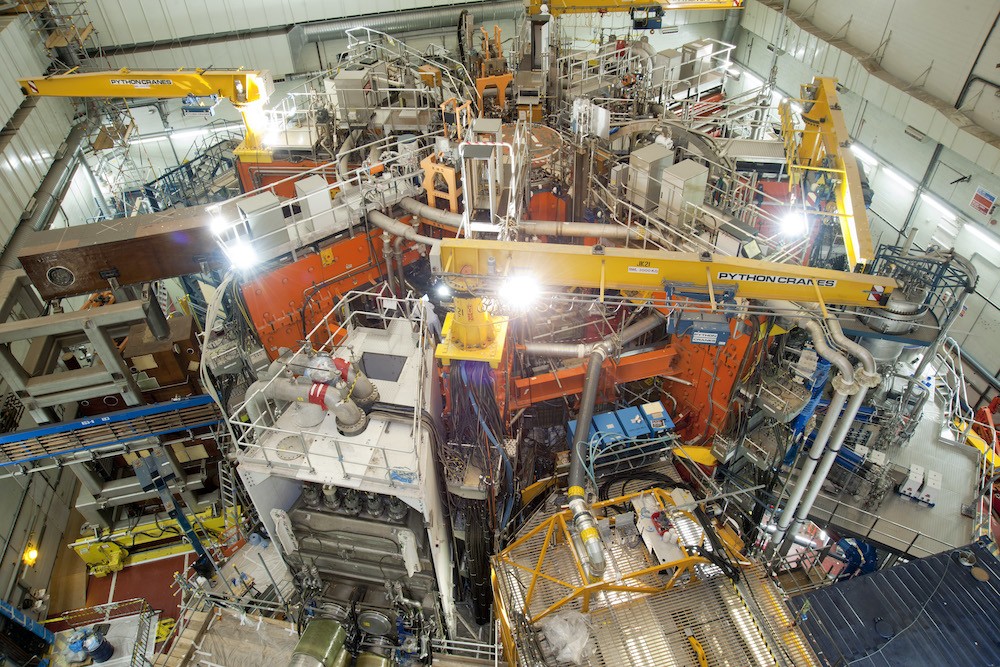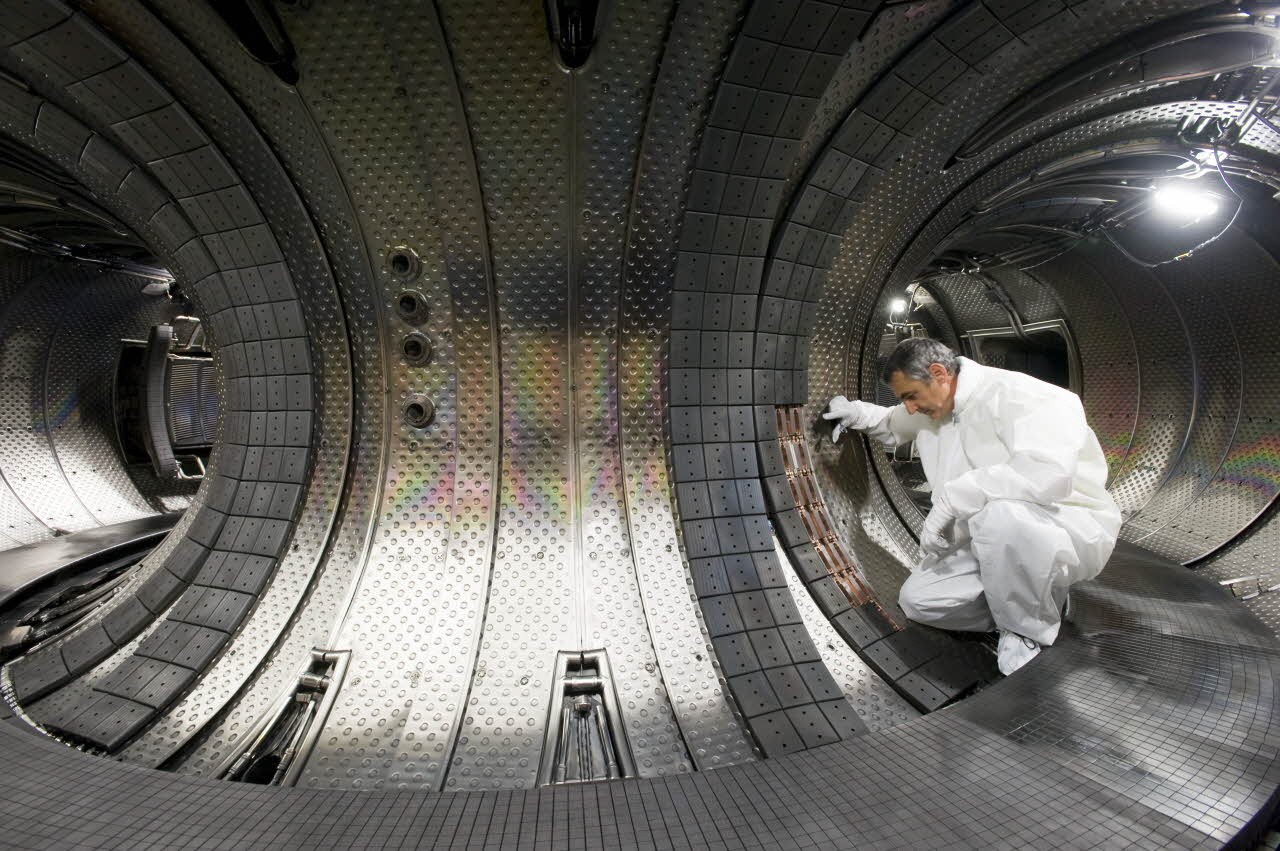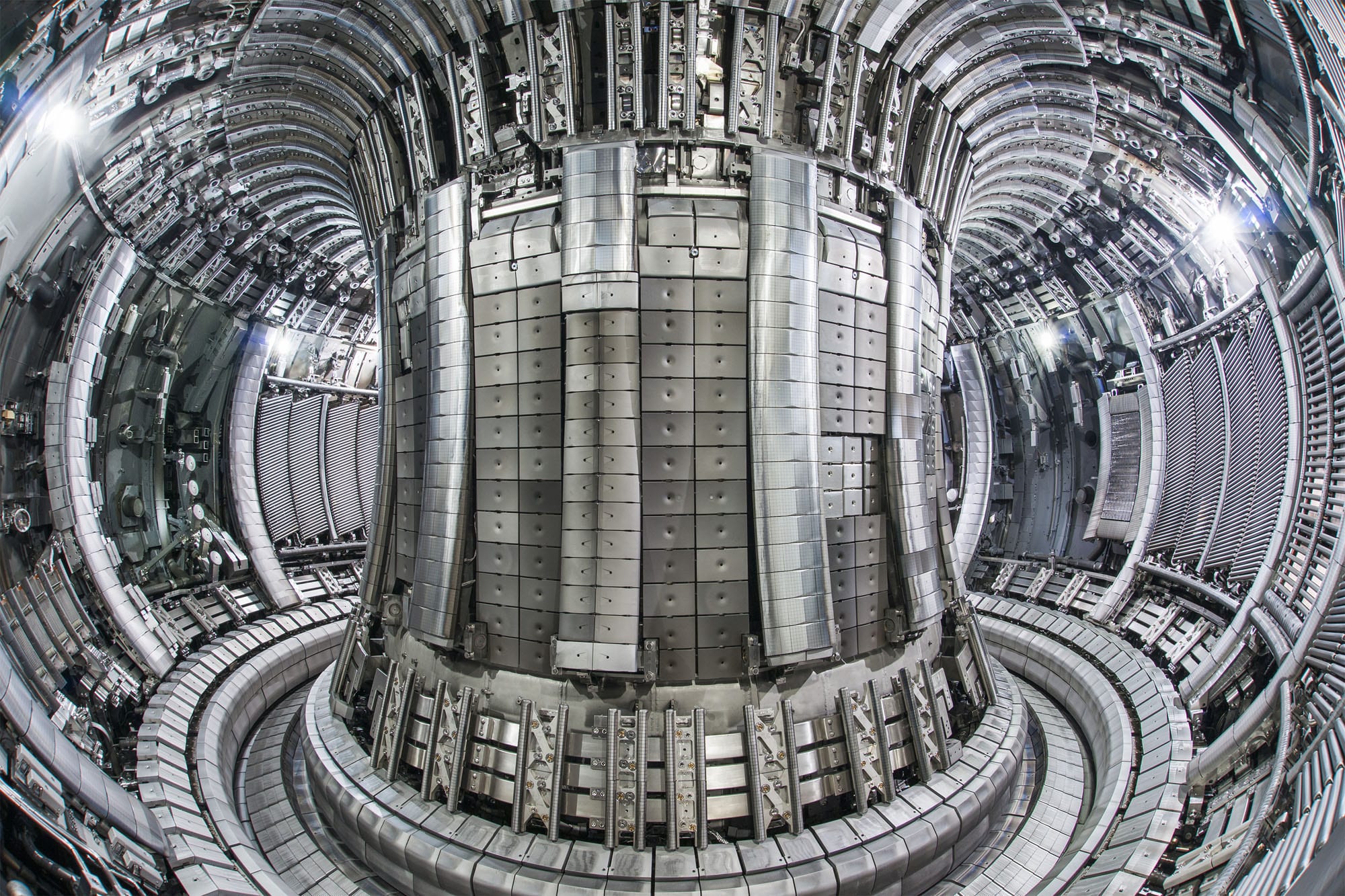

Developing
Fusion
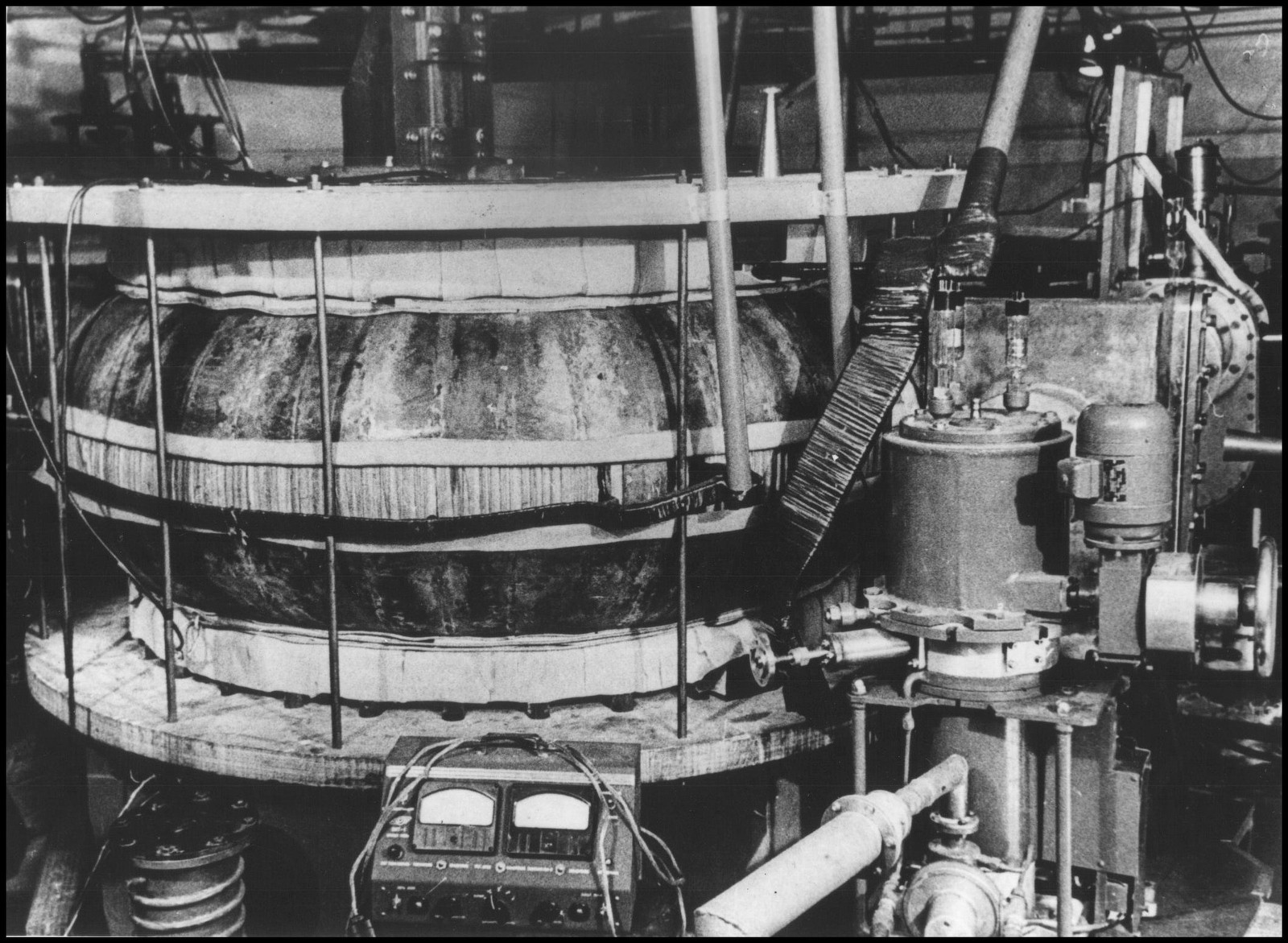
In the 1950s, we witnessed a breakthrough at the Kurchatov Institute (Russia). The concept of a “Tokamak” was born which stands for toroidal doughnut-shaped vessel with magnetic coils confining the electrically-charged gas, known as plasma, keeping it away from the walls of the chamber housing the fusion reaction. Europe has a long trajectory in fusion research. In the 1970s, European laboratories joined forces to build JET (Joint European Torus) located at Culham (UK). More knowledge has been accumulated through other tokamak devices such as Tore Supra (France), ASDEX (Germany), RFX (Italy), MAST (UK), TCV (Switzerland). The same technology will be used in ITER, which will be the biggest fusion machine ever.

ITER, which in Latin means “the way”, is the largest international experiment paving the way to fusion energy. Europe is the host of the project which is currently under construction in Cadarache, south of France. It will allow scientists to study a “burning plasma” that will produce a greater thermal output (500 MW) that the one used (50 MW) for about 7 minutes.

The Demonstration power plant (DEMO) will follow ITER, paving a transition from a scientific experiment to a power plant. It will help scientists and engineers to improve key systems and will be connected to the grid.
